#historyofscotland
Explore tagged Tumblr posts
Video
youtube
The Royal Mile is part of a series of streets forming a steep thoroughfare in the heart of Edinburgh's Old Town. Here we see the John Knox House which is considered to be the home or the “Rebel Abode" of the infamous religious reformer John Knox”. Holyrood Palace is the official residence of the reigning monarch when he or she is visiting Scotland. A new community garden opened in 2020 with three distinct areas each representing a stage in the palace's 900-year history ....
#holyrood#edinburgh#royalmile#highstreet#holyroodhouse#scotland#scotlandwalkingtour#visitscotland#edinburghview#edinburghscotland#edinburghroyalmile#queenofscotland#holyroodpalace#queenpalace#edinburgharchitecture#historyofscotland#scottishculture
0 notes
Photo

16th April 1746. Date of the Battle of Culloden, the last battle fought on British soil, and the end of the Jacobite rising in 1745. The battle was the last attempt to place a Catholic Stuart monarch back upon the throne. The aftermath of the battle saw the destruction of the highland way of life, and also a subsequent crackdown instigated by the Duke of Cumberland, earning him the title ‘the butcher of Cumberland’. In the same year, an act of parliament was passed outlawing the wearing of tartan, and highland dress. Follow @ofgrave.concern for weekly tales of the gothic, strange and macabre. #culloden #cullodenbattlefield #cullodenmoor #battleofculloden #jacobite #jacobites #scottishhistory #bonnieprincecharlie #outlander #18thcentury #18thcenturyhistory #cairn #scottishclans #scotlandhighlands #historyofscotland #jacobiterising #outlanderobsessed #historicalpainting #historicalpaintings #outlanderseries #1745 #britishhistory #historyofbritain #1746 #highlander #highlanders #historical #historystories #historicalstories https://www.instagram.com/p/CNvOHKnnxfj/?igshid=1du9tfyhp0tj0
#culloden#cullodenbattlefield#cullodenmoor#battleofculloden#jacobite#jacobites#scottishhistory#bonnieprincecharlie#outlander#18thcentury#18thcenturyhistory#cairn#scottishclans#scotlandhighlands#historyofscotland#jacobiterising#outlanderobsessed#historicalpainting#historicalpaintings#outlanderseries#1745#britishhistory#historyofbritain#1746#highlander#highlanders#historical#historystories#historicalstories
4 notes
·
View notes
Photo
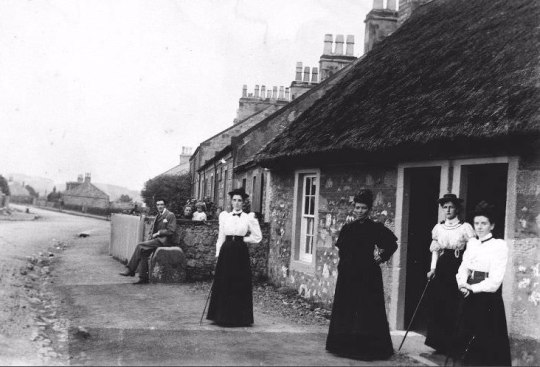


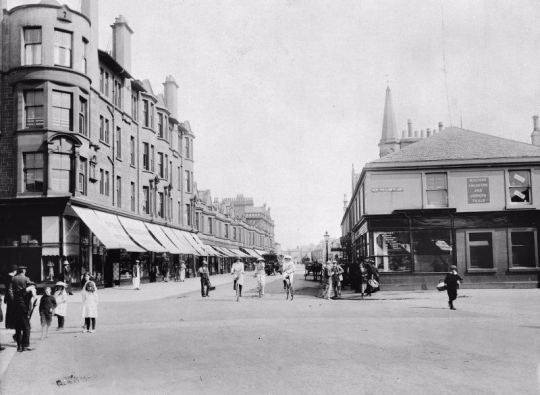
Fascinating Vintage Photos Show Life In Scotland From The Early 20th Century
#scotland#scotlandhistory#historyofscotland#scottishhistory#oldscotland#vintagephotos#historic#historicphotos#throwback#20thcentury
0 notes
Photo
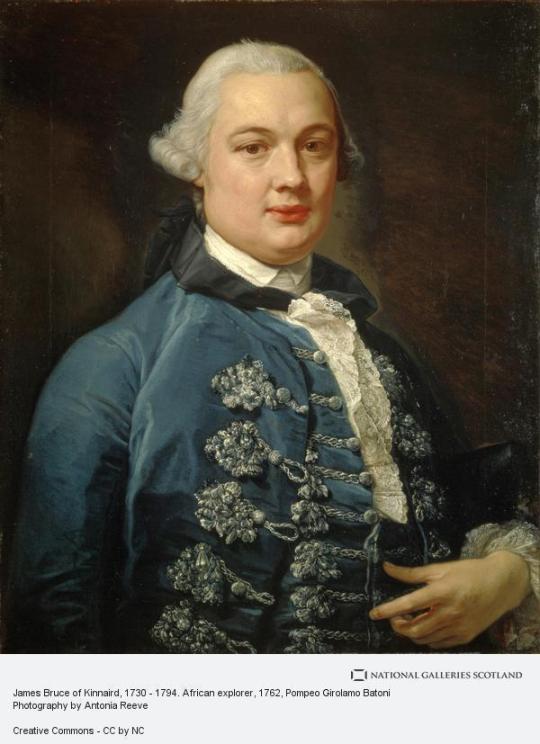

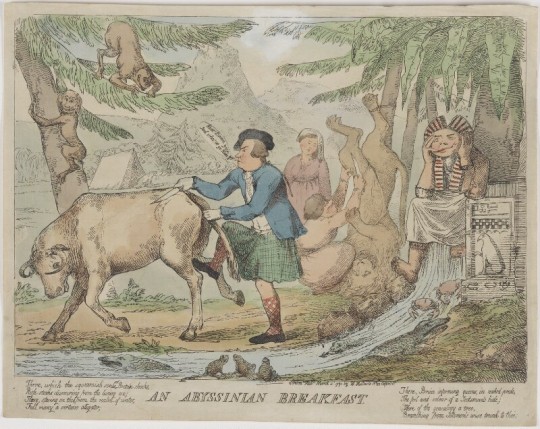
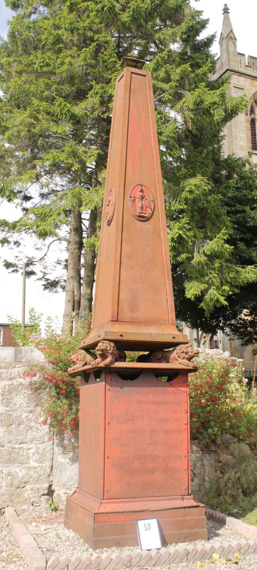
April 27th 1794 saw the death of James Bruce, the explorer at Larbert.
At six feet four inches in height, James Bruce was an impressive figure. An explorer, archaeologist and brilliant linguist, he travelled across North Africa, Crete, Syria, Egypt and Ethiopia He is best known for his exploration of the sources of the Nile, reaching the headstream of the Blue Nile in 1770.
Some historians believe that Bruce, while being recognised for finding the source of the Nile, he was actually in Africa on a secret personal mission to Ethiopia to locate a sacred religious relic, the Ark of the Covenant.
The explorer apparently charmed and gifted his way through a land usually hostile to foreigners. On his black horse Mizra, Persian for ‘scholar’, he trekked across treacherous terrain and Ethiopia’s flat-topped mountains. He brought a telescope so large it required six men to carry it.
Bruce arrived at Ethiopia’s imperial capital Gondar during a smallpox epidemic. His knowledge of medicine gained him entry to the court – where he would remain for almost a year.
James Bruce had relationships with many women in Ethiopia, including the Princess Esther. He later described this period as “one of the happiest moments of my life”.
At court, Bruce boasted of his own lineage, declaring:
“My ancestors were the kings of the country in which I was born, and to be ranked among the greatest and most glorious that ever bore the title of king.”
This was not just him boasting, his family were indeed descendants to King Robert.
On returning to London Bruce’s tales of Ethiopia, recounted at dinner parties and gossiped about in letters, were met with disbelief. He became a figure of ridicule, mocked by contemporaries such as Samuel Johnson and James Boswell. Ultimately, he would be laughed out of London.
There were, perhaps, ulterior motives for Bruce’s rejection by ‘polite’ society. In her book Plotting To Stop the British Slave Trade: James Bruce and His Secret Mission to Africa, Jane Aptekar Reeve reveals that Bruce belonged to a secret network of British slave trade abolitionists.
The Scottish cartoonist Issac Cruikshank made James Bruce a caricature, depicting his story of the “Abyssinian Breakfast”, in disbelief of Bruce’s claims that Ethiopians took live cuts of meat from cattle. This was later proven to be true, as indeed were his other stories that saw him ridiculed.
For a man who must have been in grave dangers during his adventures in Africa, he had an inglorious death, he fell down some stairs in 1793 and died at his home in Kinnaird, and is buried in a graveyard I visit now and them at Larbert Old churchyard near Falkirk.
Pics are of the cartoon I mentioned, and his rather unusual memorial at Larbert, which I read last year id due to be restored soon, hopefully.
Much more on the man here https://www.historic-uk.com/HistoryUK/HistoryofScotland/James-Bruce/
18 notes
·
View notes
Text
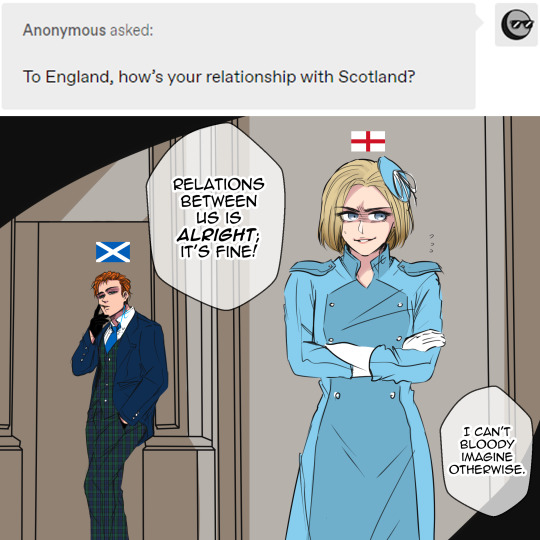
(( C'mon Victoria, we know everybody hates ya. //slapped jk pero totoo naman slight XDD ))
WHY THE SCOTS "HATE" THE ENGLISH:
1. https://www.opendemocracy.net/en/opendemocracyuk/do-scots-really-hate-english/
2. https://www.historic-uk.com/HistoryUK/HistoryofScotland/The-Auld-Enemies/
3. https://en.wikipedia.org/wiki/Scottish_independence
4. https://www.bbc.com/news/uk-scotland-scotland-politics-50813510
5. https://en.wikipedia.org/wiki/Anti-English_sentiment#Scotland
#planetputo
INTERACT/ASK OTHER CHARAS @ ask-emilz-de-philz.tumblr.com
Pls gib kopi if oki? ;;;7;;; --> ko-fi.com/haimacheir
9 notes
·
View notes
Link
The Victorian era saw massive advances in medical science, which led to people robbing graves and committing murders so the bodies could be donated to medical schools in exchange for money. Burke and Hare were famous for doing this. This is a good example of some of the crime that happened in the era.
This article, like the previous, also shows how Victorian people reacted to the death of a murderer. They found murders shocking and horrifying, but turned out in droves to see a killer hung despite the fact that they took pride in being good people.
3 notes
·
View notes
Note
haunted house and graveyard:)
Haunted House: Prefer to live in the city of country?
I’d like something in between, although I don’t mind living in Edinburgh just now because I’m quite close to nature.
Graveyard: Know any scary stories?
The disappearances of Eilean Mor Lighthouse -https://www.historic-uk.com/HistoryUK/HistoryofScotland/The-Eilean-Mor-Lighthouse-Mystery/
7 notes
·
View notes
Text
Researching Maclean
This ancient surname is of early Gaelic origins. It is derived from 'Maccbethad' (the modern Scottish 'Macbeth'), meaning 'son of life', or 'man of religion', which hardly fits in with Shakespeares interpretation! Today the name is quite numerous in North East Ulster and it is found in a wide variety of spellings which include McVeigh, MacVaugh, MacVagh, MacVaugh, McVey, MacBey, etc.. However its probable place of origin was in the Scottish Islands of Mull and Islay where in the medieval times it is believed that the Clan were the hereditary physicians to the region. They were also, it is said, great historians, and collectors of ancient manuscripts. The recordings include Father Patrick Macabeath (1541), Bishop of Armagh, Ireland, whilst John McVeigh was a prominent rebel in the 1798 rebellion of Ireland and was executed at Baltinglass. Church recordings include the following examples, Leiticia McVeagh who married Thomas Gordon on the April 1st 1785, at Edinburgh Parish, Edinburgh, whilst Anna McVey, aged 25, is recorded as being a 'Famine Emigrant' who sailed on the ship 'Manchester' from Belfast to New York, on September 25th 1846. The first recorded spelling of the family name is shown to be that of John Macvay, which was dated 1504, in the Exchequer Rolls of Scotland, during the reign of King James 1V of Scotland, 1488 - 1513. Surnames became necessary when governments introduced personal taxation. In England this was known as Poll Tax. Throughout the centuries, surnames in every country have continued to "develop" often leading to astonishing variants of the original spelling. Read more: https://www.surnamedb.com/Surname/McVeagh#ixzz63fqgwrvR
Maclean: Tradition tells that this powerful clan was descended from Gilleain-nan-Tuagh (Gillian of the Battle Axe), a descendant of the Kings of Dalriada. Gillian fought against King Haakon of Norway at the Battle of Largs in 1263. The first recorded mention of the Macleans of Duart is in a Papal Dispensation of 1367, which allowed the Maclean Clan Chief to marry Mary MacDonald, the daughter of the Lord of the Isles. The Isle of Mull off Scotland’s northwest coast was the principal home of the clan, with the MacDonald dowry supplying the funds to purchase substantial parcels of the island. The Macleans supported King Charles I against the Parliamentarians. Sir Hector Ruadh Maclean and five hundred of his clansmen were slain at the Battle of Inverkeithing in 1651 by Cromwell’s New Model Army. In 1876 Sir Harry Maclean resigned his commission in the British Army to join the army of the Sultan of Morocco. He enjoyed a romantic career and became military leader and personal advisor to the Sultan. Family motto – Virtue Mine Honour.
https://www.historic-uk.com/HistoryUK/HistoryofScotland/The-Great-Clans-of-Scotland/
0 notes
Link
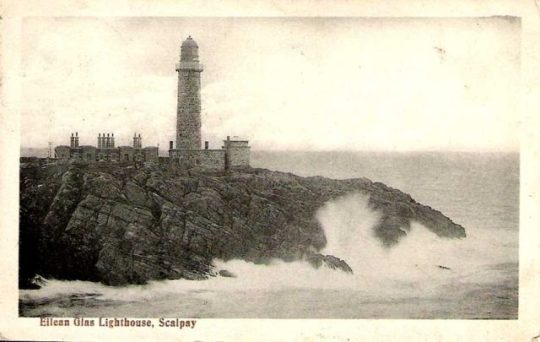
(photo here, which also discusses the mystery)
0 notes
Text
Anthropodermic bibliopegy: the grotesque history of books bound in human skin
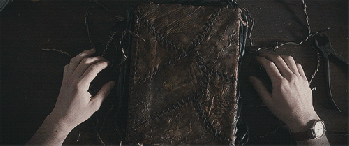
On the Under the Knife show, Dr Lindsey Fitzharris elucidates the weird history of "anthropodermic bibliopegy," the weird practice of binding books in human skin, including the doctor who bound case histories in the skins of his dead patients, and the murderer who asked to have his biography bound in his skin and presented to the lawman who caught him after his execution. Other common ways to procure human skins for the practice included grave-robbing (Andrea wrote about the Burke and Hare editions back in 2016)
youtube
http://laphamsquarterly.org/roundtable/book-its-cover/
http://www.historic-uk.com/HistoryUK/HistoryofScotland/Burke-Hare-infamous-murderers-graverobbers/
0 notes
Photo

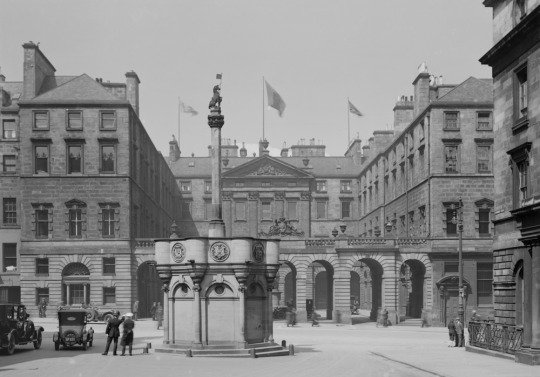
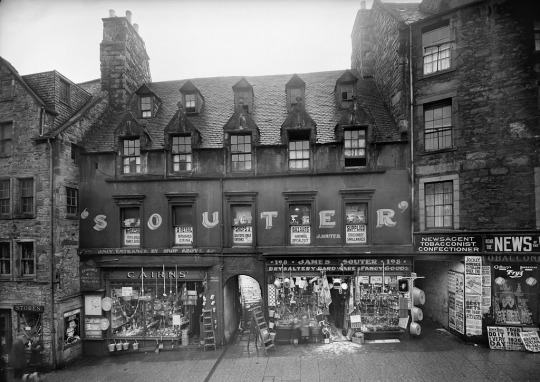
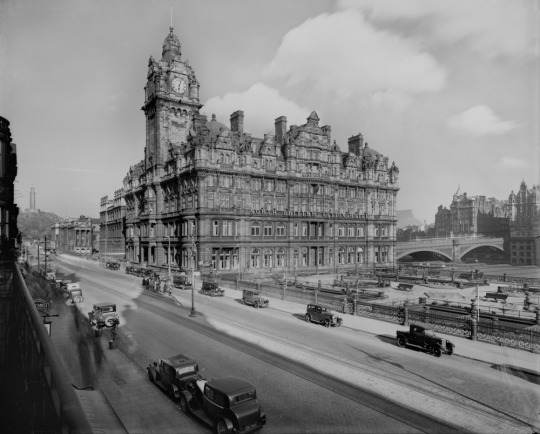
Old Edinburgh: Stunning Historical Photos Show Edinburgh From between 1850s and 1930s
#edinburgh#edinburghcastle#edinburghlife#edinburghcity#edinburghinphotos#edinburghhistory#scotland#scotlandhistory#edinburghscotland#historyofscotland#scottishhistory#scottishleft#1930s
0 notes
Photo


Bless you, John Hunter Bell, for this short clip via Instagram stories. To learn more about Greyfriar's Bobby: http://www.historic-uk.com/HistoryUK/HistoryofScotland/Greyfriars-Bobby/ Bobby's headstone reads "Greyfriars Bobby - died 14th January 1872 - aged 16 years - Let his loyalty and devotion be a lesson to us all".
6 notes
·
View notes
Link
Learn how calling loved ones builds stronger social connections than texting does, why the return of wolves improved life for every animal in Yellowstone, and how body snatchers of the 19th century contributed to modern medicine.
Call, Don't Text, for a Stronger Social Connection by Kelsey Donk
Kumar, A., & Epley, N. (2020). It’s surprisingly nice to hear you: Misunderstanding the impact of communication media can lead to suboptimal choices of how to connect with others. Journal of Experimental Psychology: General. Advance online publication. https://doi.org/10.1037/xge0000962
Texas McCombs. (2020, September 10). When We Fear an Awkward Phone Call, We Often Turn to Text. Medium; Big Ideas. https://medium.com/texas-mccombs/when-we-fear-an-awkward-phone-call-we-often-turn-to-text-62ac6eec93e5
Phone Calls Create Stronger Bonds Than Text-Based Communications. (2020, September 11). UT News. https://news.utexas.edu/2020/09/11/phone-calls-create-stronger-bonds-than-text-based-communications/
The Return of Wolves Improved Life for Every Animal in Yellowstone by Reuben Westmaas
Tobin, K. (2015, September 4). Did wolves help restore trees to Yellowstone? PBS NewsHour. https://www.pbs.org/newshour/science/wolves-greenthumbs-yellowstone
Peglar, T. (2020, June 30). 1995 Reintroduction of Wolves in Yellowstone. My Yellowstone Park. https://www.yellowstonepark.com/park/yellowstone-wolves-reintroduction
Travsky, A. (2014, February 19). Wolves Bring Aspen Back. My Yellowstone Park. https://www.yellowstonepark.com/things-to-do/wolves-bring-yellowstone-back
Farquhar, B. (2020, June 30). Wolf Reintroduction Changes Ecosystem. My Yellowstone Park. https://www.yellowstonepark.com/things-to-do/wolf-reintroduction-changes-ecosystem
Why 19th-Century Body Snatchers Were an Essential Part of Medical Science by Steffie Drucker
Body Snatching Around The World | History Detectives | PBS. (2014). Pbs.Org. https://www.pbs.org/opb/historydetectives/feature/body-snatching-around-the-world/
The Era of the Body Snatchers. (2014, October 16). Mentalfloss.Com. https://www.mentalfloss.com/article/59550/era-body-snatchers
Body snatching | Britannica. (2020). In Encyclopædia Britannica. https://www.britannica.com/topic/body-snatching#ref1179705
Burke and Hare, grave robbers and murderers. (2017). Historic UK. https://www.historic-uk.com/HistoryUK/HistoryofScotland/Burke-Hare-infamous-murderers-graverobbers/
Ghazanfar, H., Rashid, S., Hussain, A., Ghazanfar, M., Ghazanfar, A., & Javaid, A. (2018). Cadaveric Dissection a Thing of the Past? The Insight of Consultants, Fellows, and Residents. Cureus. https://doi.org/10.7759/cureus.2418
Subscribe to Curiosity Daily to learn something new every day with Ashley Hamer and Natalia Reagan (filling in for Cody Gough). You can also listen to our podcast as part of your Alexa Flash Briefing; Amazon smart speakers users, click/tap “enable” here: https://www.amazon.com/Curiosity-com-Curiosity-Daily-from/dp/B07CP17DJY
See omnystudio.com/listener for privacy information.
#Curiosity Daily Episodes#health#history#science podcast#educational podcast#podcasts#best podcasts#science#psychology#learning#interesting#fun facts#educational podcasts#science podcasts#Discovery#curosity#daily podcasts
0 notes
Note
What is your favourite scottish: Song, film, book, poem, city, event, folktale, meal. (pick as many as you want) and why?
Awesome set of questions!Song: Rhythm of my Heart by Runrig https://youtu.be/ybR0F9wdpL8Film: Braveheart because it’s a good film and the ending scene at Bannockburn is just 👌. https://youtu.be/eclbaC3q94kBook: Just check out anything by Ian Rankin if you fancy a good detective story in ScotlandPoem: A Man’s a Man for a’ That by Robert Burns. I like this poem because it’s a call to judge people by their character rather than their titles. “Ye see yon birkie ca'd a lord, Wha struts, an' stares, an' a' that; Tho' hundreds worship at his word, He's but a coof for a' that.”You see the young man who’s called a lord,Who struts and stares and all that,Although hundreds worship at his wordHe is but an idiot for all thatFight the power Burns💪City: The grand metropolis of Falkirk because I was born there. I think it has potential for growth. I like Glasgow because the people are really down to earth and Edinburgh is a beautiful city too. I also really like Inverness.Event: St Andrew’s Day or Rabbie Burns day because Ceilidh’s are fucking great. Independence Day will be something else though, I’ll probably end up partying myself to death.Folktale: The disappearance of the Eilean Mor lighthouse keepers. A spooky read! http://www.historic-uk.com/HistoryUK/HistoryofScotland/The-Eilean-Mor-Lighthouse-Mystery/Meal: Going to go with the classic Haggis, Neeps and Tatties.
13 notes
·
View notes
Text
Cannibalism
Cannibalism is the act of consuming another individual of the same species as food. Cannibalism is a common ecological interaction in the animal kingdom and has been recorded in more than 1,500 species. Human cannibalism is well documented, both in ancient and in recent times.
Some cases of where cannibalism/anthropophagy occurs; Famine, Ceremonial purposes or in cases of animals its tradition in certain species.
Scotland’s most famous cannibal; https://www.historic-uk.com/HistoryUK/HistoryofScotland/Sawney-Bean-Scotlands-most-famous-cannibal/
https://en.wikipedia.org/wiki/Human_cannibalism
https://fitness-gear-equipment.knoji.com/ritual-cannibalism-past-and-present/
Fascinatingly, during some traditional ceremonies or funeral rites, within certain tribes they will consume either their sacrifice or their late loved ones, the reasoning for this is because they believe that in doing so it will result in them becoming one/closer to their late loved ones by inheriting the traits from them after consumption. (Index) After generations of practicing such ceremonies these tribes have built up an immunity to Kuru diesease.
https://www.healthline.com/health/kuru
The laughing disease ; The term kuru derives from the Fore word kuria or guria ("to shake"), due to the body tremors that are a classic symptom of the disease and kúru itself means "trembling". It is also known as the "laughing sickness" due to the pathologic bursts of laughter which are a symptom of the disease.
Animals Cannibalism ; https://www.wired.com/2015/01/animal-cannibalism/
*Fun Fact - there is currently no laws against cannibalism in the UK.
0 notes
Text
The Burke and Hare murders aka the ‘West Port Murders’ or ‘The Anatomy Murders’

Edinburgh, 1828, the thirst for knowledge regarding the human anatomy was high, however, the Scottish law (which allowed only the use of cadavers of those condemned of death) added to the Judgement of Death Act (which decreased the number of death as punishment) made it hard to fulfil. As a result, grave-robbers/”resurrectionists” started to appear and sell bodies stolen from their graves to medical researchers.
William Burke and Willian Hare, contrary to popular belief were not one of those. The objective could be the same, but the way to getting to it was much more thrilling. These two kept a personal business with Doctor Robert Knox by selling him bodies from people that they had killed, while the doctor would later use the bodies for dissection at his anatomy lectures.
Burke and Hare were Irish immigrants with any prior criminal record or history of criminal behaviour. The latter had a lodging house in which the first resided while he was on the navy - also being the way that they both met.
Their first successful trade was when together they sold the body of a deceased resident of the lodging house. Seeing it as an opportunity of gaining some extra money, the pair (alongside their wives) kept their killing spree focused mainly in Edinburgh’s poorest communities (as for their less likeliness of being missed). Until two of Hare´s lodgers grew suspicious about the disappearance of a visitor (Madgy Docherty) leading them to her dead body under Burke’s bed and, afterwards, to the police.

(”Old Donald” was the deceased resident and first product of trade)
Burke and Hare most usual “process” was luring people into Hare’s lodging house for drinks. After having the prey drunk, they would cover the person’s mouth and nose while squeezing their rib cage - preventing their lungs and diaphragm from expanding. It did not leave marks on the victim’s body and the huge amount of alcohol wouldn’t bring any suspicions up neither - since alcohol poisoning and drunken stupor were common causes of death among the “lower people”.
During the trials, Hare and his wife testified against Burke - which gave the couple immunity -, however, the latter was not only found guilty and executed by hanging (January 28th 1829) but also publicly dissected in Edinburgh Medical College, with his skeleton remaining on display at the college’s museum and his skin used to make a book - exposed in the police museum on The Royal Mile - and a calling card case - as the only exhibit in The Willian Burke Museum .

Calling card case made of Willian Burke’s skin


Book case made of William Burke’s skin
Meanwhile, Dr. Knox did no public statement, however, a committee of inquiry reported that he had “seen no evidence that Dr. Knox or his assistants knew that murder was committed in procuring any of the subjects brought to his rooms”. As the time passed, Robert Knox resigned from his position as curator of the College of Surgeons and gradually excluded from university life by his peer. By 1856 he started working as pathological anatomist at the Brompton Cancer Hospital until his death in 1862.
16 people were killed (and 17 sold) within 12 months, making Burke ad Hare’s names tagged along with the most atrocious murders of the decade (one may even consider “of the century”). However, one may believe the actual number of deaths was a lot bigger than it is known.
____________________
The (known) victims
* the first body they sold isn’t in this list because it wasn’t killed by them, but died of natural causes
** names in bold are the ones that brought up suspicions
*** they weren’t necessarily killed in this order
Joseph the Miller - an ill tenant that took too long to die of his illness, so Burke and Hare speed up the process by plying him with whiskey and then suffocating him by covering his mouth and nose while the victim was forcibly restrained - what would later be known as “burking”
Mary Paterson - a prostitute followed by rumours of having “extraordinary beauty” and, even dead, her corpse was, according to historian Lisa Rosner, “the most notorious cadaver”. She is said to be well-known to Burke before her murder, in fact, right before she was given “missed” by her friend (Janet Brown), William invited the sex-worker and Brown to breakfast and drinks. A couple of bottles of whiskey later, Paterson passed out and Janet left the room (because the host started arguing with his wife), returning shortly after, but being too late to save her friend. (fun fact: the medical student that dissected Mary’s corpse realised, only after starting the lesson, that it was actually the body of his last night lover)
James Wilson (aka Daft Jamie) - a well-known street figure who wandered through Edinburgh “barefoot and bareheaded, in all sorts of weather” - which gave him the nickname “Daft Jamie”. He had savantism (a condition in which someone with significant mental disabilitiesdemonstrates certain abilities far in excess of average), keeping him unemployed and leading him to live in the streets. He was Burke and Hare’s oddest victim, since his disappearance would call a lot of attention - and it did, eventually -, however, it was Margaret (Hare’s wife) who picked him for his eccentric look. The homicidal friends burked James, but he struggled fiercely as a sober man in his twenties would. The failed attempt ended with more brutal means being needed, resulting in Daft Jamie’s death. After a short while, people started noticing the disappearance of the popular youngster. Afterwards, one of Knox’s colleagues, Dr. William Ferguson, recognised the corpse that was being used on the lecture as belonging to the disappeared young man, however, Dr. Knox insistedly denied it - allowing Burke and Hare’s business to continue.
Abigail Simpson - lured into the Hare boarding house for drinks, Abigail was a victim of the infamous pair, killed by burking. (fun fact: she was the first person to be burked and, for being sold to Dr. Knox by the same time as Joseph the Miller, no one still knows which one of them were actually Burke and Hare’s first kill)
Madgy (Margaret or Margery) Docherty (aka Campbell) - Lured by Burke into the lodging house under the claim that his mother was also a Docherty, however, the presence of two other lodgers (James and Ann Gray) made William wait to kill his next victim. During the night, the neighbours heard the sounds of struggle and, in the next morning, Ann became suspicious when Burke would not let her approach a bed containing her belongings. When alone, the Grays went to check the bed only to find Madgy’s body underneath it. The murderous pair removed the body before the cops arrived, but the inconsistence in their lies gave them up. An anonymous tip-off led the police to Knox’s classroom, where Campbell’s body was find and identified by James Gray. Madgy Dochery was Burke and Hare’s last victim and the only cadaver examined by the police.

Sketch of Madgy Docherty

Sketch of Mary Paterson

Sketch of Daft Jamie
__________________
Sources
http://burkeandhare.com/
http://www.edinburgh-history.co.uk/burke-hare.html
https://en.wikipedia.org/wiki/Burke_and_Hare_murders
https://theculturetrip.com/europe/united-kingdom/scotland/articles/what-happened-to-edinburghs-notorious-grave-robbers-burke-and-hare/
https://www.historic-uk.com/HistoryUK/HistoryofScotland/Burke-Hare-infamous-murderers-graverobbers/
http://pennpress.typepad.com/pennpresslog/2009/10/index.html
https://simple.wikipedia.org/wiki/Burke_and_Hare_murders
#truecrime#tcc#true crime community#killers#murderers#murder#kills#killer#burke and hare#edinburgh#history#william burke and william hare#william burke#william hare#the west port murders#the anatomy murders#the burke and hare murders#corpses#grave robbers#grave robbery#true crime#serial killer#serial killers#mass murder#mass murderes
0 notes